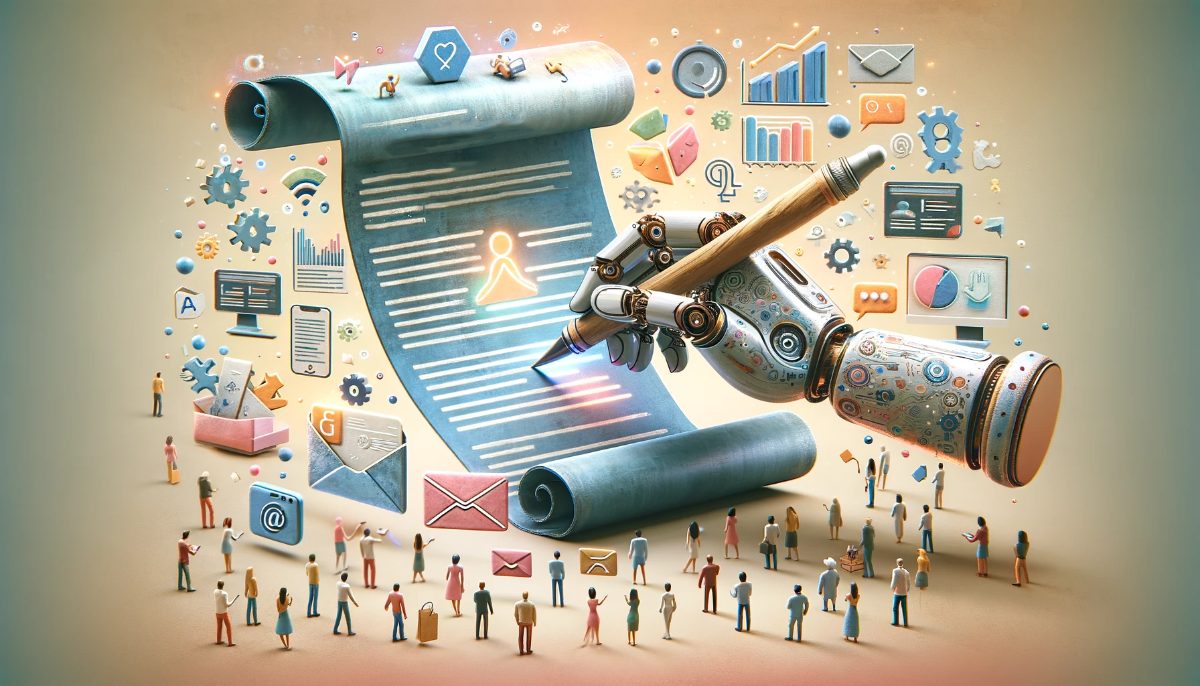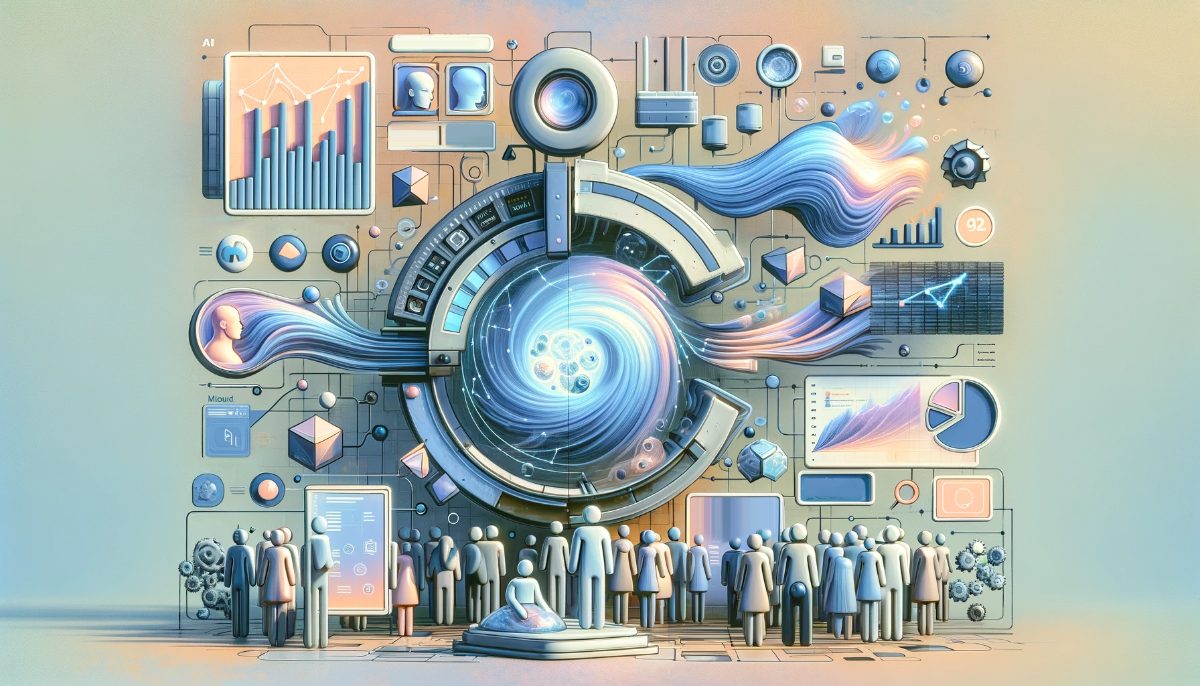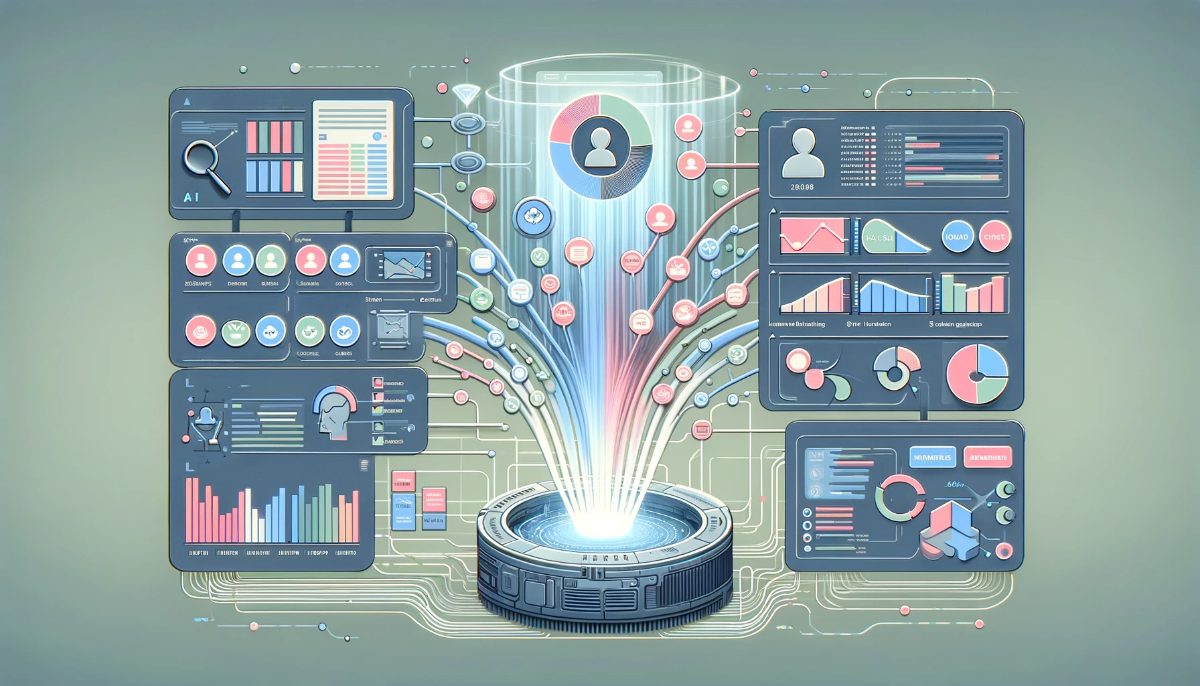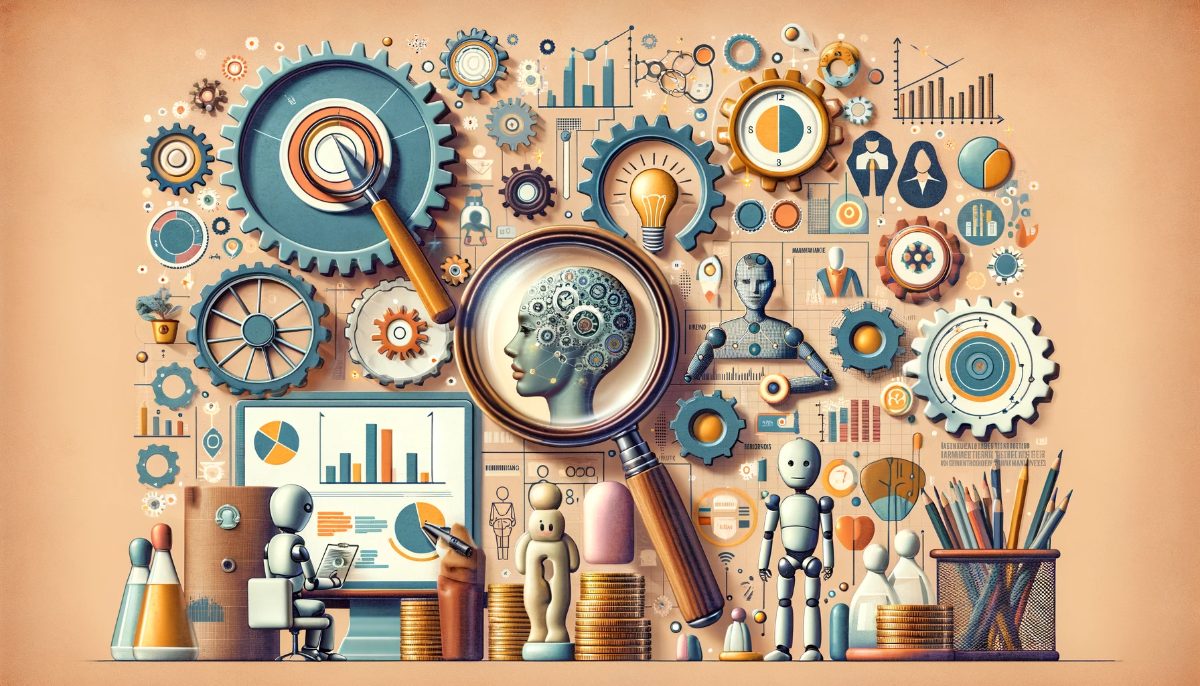Welcome, marketers! Let’s explore how integrating AI can improve your marketing. The numbers speak for themselves – AI delivers over 20% higher ROI by optimizing campaigns, predicting customer needs, and enabling hyper-personalization at scale.
So what exactly can AI do for your marketing? For starters, it analyzes consumer data to identify high-value customer segments to target. It also creates personalized content and messaging tailored to individual users. Additionally, AI in marketing optimizes budget allocation across campaigns and channels, ensuring you get the highest return.
Furthermore, AI predicts customer lifecycle stages, allowing you to engage users at the right time with the right message. It also generates insights from data patterns that humans simply cannot detect. Lastly, artificial intelligence automates tedious and time-intensive tasks like reporting, freeing you up to focus on high-level strategy.
Personalized Content Creation

Personalized content is critical for engaging today’s consumers and driving conversions. AI tools allow you to automatically create customized content tailored to each individual at scale. According to one survey, 76% of marketers leveraging AI achieve higher customer retention rates compared to peers not using AI.
For example, an ecommerce store can use AI to analyze a customer’s past purchases, browsing history, and demographic data. It then automatically generates product recommendations and email content that speaks directly to that shopper’s tastes and preferences. Instead of bombarding customers with irrelevant suggestions or generic messaging, the content addresses their specific needs and interests.
“Research shows 72% of consumers only engage with customized messaging. Furthermore, personalized content can deliver five to eight times higher conversion rates compared to generic content. When you speak directly to what matters most to each customer, they listen and respond favorably.”
This personalized approach pays dividends. Research shows 72% of consumers only engage with customized messaging. Furthermore, personalized content can deliver five to eight times higher conversion rates compared to generic content. When you speak directly to what matters most to each customer, they listen and respond favorably.
The key is that AI enables this level of personalization at scale across thousands or millions of customers. Manually customizing every piece of content for every user is simply not feasible. The automation and efficiency of AI systems allow for targeted content creation that simply wasn’t possible before.
Predictive Analytics

Predictive analytics is a powerful tool in the digital marketing arena, particularly when it comes to understanding customer behavior and crafting targeted marketing strategies. AI-driven tools such as H2O Driverless AI, IBM Watson Studio, and Microsoft Azure Machine Learning are instrumental in this process. They analyze data from a variety of sources, identify patterns, and make accurate predictions about future customer behavior. This predictive capability enables marketers to make informed decisions and enhance the performance of their marketing campaigns.
Let’s delve into some real-world examples to illustrate the power of predictive analytics in marketing.
Product Development and Customer Segmentation
Predictive analytics can be a game-changer in product development. By analyzing customer behavior and preferences, these tools can predict what kind of products or services customers might need or want in the future. For instance, a company that sells skincare products could use predictive analytics to determine what kind of new products their customers might be interested in, based on their past purchases and browsing behavior.
Similarly, customer segmentation is another area where predictive analytics shines. By analyzing customer data, these tools can identify different customer segments based on their behavior, preferences, and other factors. This allows companies to create more targeted and effective marketing campaigns. For example, a clothing retailer could use predictive analytics to identify customers who are interested in sustainable fashion and target them with relevant marketing messages.
“Predictive analytics can also help companies reduce customer churn. By analyzing customer behavior and identifying patterns, these tools can predict which customers are at risk of leaving. This allows companies to take proactive measures to retain these customers, such as offering them special deals or addressing their concerns.”
Churn Prediction and Ad Personalization
Predictive analytics can also help companies reduce customer churn. By analyzing customer behavior and identifying patterns, these tools can predict which customers are at risk of leaving. This allows companies to take proactive measures to retain these customers, such as offering them special deals or addressing their concerns.
Ad personalization is another area where predictive analytics can make a big difference. By understanding customer behavior and preferences, these tools can help companies create highly personalized ads that are more likely to resonate with their target audience. For example, a streaming service could use predictive analytics to recommend shows or movies based on a user’s viewing history.
Customer Segmentation

Customer segmentation is a fundamental concept in marketing that allows businesses to reach their target audience effectively. With the advent of AI, this process has been significantly enhanced, offering greater scalability, efficiency, and precision.
AI tools analyze customer data and provide information for creating detailed customer profiles. This makes it possible to identify specific customer groups based on their behaviors, preferences, and interactions with your brand. With this information, you can tailor your marketing messages, content, product offerings, and recommendations to appeal to the unique needs of each customer segment.
For instance, Airbnb uses machine learning to gain insights from user reviews. They use this behavioral data and preference to pair hosts and guests. With A/B testing, they discover how website changes affect consumer behavior. They are able to adjust and personalize the content that users see when browsing the website.
“10% to 15% more revenue is generated by businesses that tailor their offerings to customer segments than by those that do not. Email segmentation results in a 33% increase in customer lifetime value”
AI-powered customer segmentation provides businesses with insights into their customers, allowing for informed decisions regarding product development, pricing strategies, and targeted marketing efforts. AI tools can help identify and clean up duplicate or outdated data, ensuring that customer segmentation is based on accurate and up-to-date information. This leads to more reliable insights and more precise target group identification.
AI also brings scalability and efficiency to customer segmentation. Instead of manual data analysis, AI automates the process, saving time and resources. Real-time data analysis allows adaptive targeting, ensuring marketers respond promptly to changing customer dynamics.
Chatbots

Chatbots, powered by AI, have become a valuable tool in the marketing landscape. They automate customer service, improving efficiency and enhancing the customer experience by providing instant responses to queries and concerns.
One of the most notable examples of chatbot use is Domino’s Facebook Messenger chatbot. This chatbot’s success lies in its simplicity and accessibility. Available on the company’s Facebook page, it allows customers to place orders or connect with the company’s customer service from anywhere.
“76% of marketers leveraging AI, including chatbots, achieve higher customer retention rates compared to peers not using AI”
Chatbots are not limited to customer service; they also play a significant role in sales and marketing. For instance, Domino’s launched a promotional PR stunt on Tinder in the UK. Users could swipe right on “Dom Juan,” the company’s chatbot, which would then send over cheesy chat-up lines. This creative use of a chatbot not only engaged customers but also promoted the brand in a fun and memorable way.
In the realm of customer support, chatbots like those used by HelloFresh are self-aware, acknowledging that they are bots and not customer service representatives. This transparency can enhance the customer experience, as customers appreciate knowing when they’re interacting with a bot.
Chatbots also offer scalability. They are available 24/7, allowing them to service more customers whenever they need help. This constant availability can save time and resources while serving more customers.
Real-Time Personalization

Real-time personalization is a dynamic force in today’s marketing strategies, offering a competitive edge by adapting to customer preferences on the fly. Imagine visiting an online store and immediately seeing product recommendations that align perfectly with your past purchases and browsing habits. This isn’t just convenient; it’s a tailored shopping experience that can significantly boost engagement and sales.
For example, consider a streaming service that uses real-time personalization to suggest movies and shows. As soon as you finish watching a thriller, the service immediately recommends other heart-pounding titles. This kind of instant, relevant suggestion keeps you engaged and increases the likelihood of continued subscription.
“AI delivers over 20% higher ROI by optimizing campaigns, predicting customer needs, and enabling hyper-personalization at scale”
Moreover, real-time personalization can enhance loyalty programs. A coffee shop app might track your purchases and, noticing you often buy a particular pastry with your coffee, offers a discount on that item as you’re nearby. This not only delights you as a customer but also encourages repeat visits and purchases.
The scalability of AI in real-time personalization means that whether you’re a small boutique or a multinational corporation, you can provide this level of service to countless customers simultaneously. It’s a powerful way to make every customer feel like the marketing message is crafted just for them, increasing loyalty and driving up sales in the process.
Data Analysis

Data analysis tools can process millions of data points from successful campaigns in a fraction of the time it would take a human analyst. This allows marketers to make data-informed decisions that can significantly improve business results.
For instance, RapidMiner, an AI tool, facilitates data analysis and predictive modeling, providing valuable insights for future strategies. Similarly, Albert AI uses AI algorithms to process and analyze large volumes of data quickly, providing real-time suggestions for improvement based on ongoing campaign data analysis.
Another example is Peak.ai, which empowers marketers with robust data analytics capabilities, enabling them to derive valuable insights from their data. The platform uses predictive modeling techniques to forecast future trends, helping marketers make informed decisions and optimize their strategies.
AI marketing tools also play a pivotal role in enhancing the effectiveness and efficiency of marketing. They enable marketers to comprehend customer behavior, target specific segments, and deliver personalized content.
For instance, eBay has used AI for years in data analysis to make recommendations to users and predict customer behavior. Now, it is rolling out AI tools to its sellers so they can customize experiences for their buyers.
AI-powered marketing tools can also provide insights by comparing old and new clients to teach you how to produce more effective campaigns. It also allows you to target their previous clients better and improve their experience.
Conclusion
AI tools have proven to be a significant asset in enhancing marketing strategies. They offer a multitude of benefits, from personalizing content to predicting customer behavior. AI’s ability to analyze consumer data allows for the identification of high-value customer segments, leading to more targeted marketing efforts. It also enables the creation of content and messaging tailored to individual users, resulting in a more personalized and engaging customer experience. By integrating AI into your marketing strategy, you can improve efficiency, boost customer engagement, and ultimately drive growth.
If you like this post, check out other AI-related articles:
5 effective tactics for using predictive lead scoring in sales

